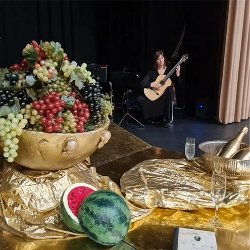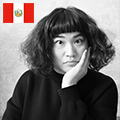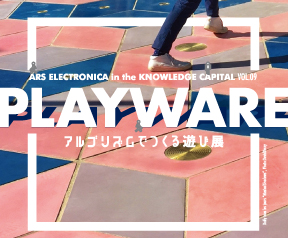
It’s located in the Cidade Matarazzo complex, just off Paulista Avenue, which is known as the main street for São Paulo's industry and culture. The Rosewood São Paulo Hotel opened in this complex in 2022.
Cidade means "town" or “city” in Portuguese. The land where this complex was built was owned by Francesco Matarazzo (1854-1937). In a single generation, he built more than 300 companies in industries ranging from trade to textiles, food, and so on. In his day, there was probably not a single Brazilian who didn’t know about the Matarazzo conglomerate. However, the company filed for bankruptcy with its creditors in 1980.
Once standing in this complex was the Humberto Primo Hospital, which locals nicknamed the Matarazzo Hospital. In 1922, he built the Santa Luzia Chapel, and an obstetrics and gynecology clinic in 1943. In the end, after 50 years, it could be sustained no longer.
In 1986, the Council for the Defense of Historical, Archaeological, Artistic and Tourist Heritage (CONDEPHAAT) designated this complex as a historical heritage site. After this designation, it remained virtually closed for about 20 years, but renovations started soon after a rock festival was held on the site in 2015.
These historic buildings were used to create the Casa Bradesco. It covers an area of 5,000 square meters and has four spaces: Aqui (Here), Ali (There), Acima (Above), and Abaixo (Below). It can accommodate large-scale art objects.

I went to Casa Bradesco for the first time last month. There is a large rubber tree on the sidewalk at the entrance, looking as though it had witnessed the entire history of this place.


Once inside, you’ll find an art bookstore. It's the kind of bookstore where you can casually pick up a book and have a read. This particular building used to be a hospital, so it has rows of tall, narrow windows, which were common in the architecture of those days. It still retains the feel of a hospital. Just entering the building was a thrill.
On display was a creation by French artist Eva Jospin, “Chambre de Soie” (Silk Room). It was fabulous, a plant and fantastical landscape image embroidered by the Chanakya Workshop in Mumbai, India, and the students at its school. The work, 3.5 meters tall and 107 meters long, couldn’t fit into one photo. It was embroidered with a variety of techniques, so even looking closely, you could see amazingly intricate details.


There was also a giant piece of work using cardboard, which was also magnificent. The “Selva” (Jungle) installation, created out of materials like wood, cardboard, and fibers, depicted in fine detail images of trees in a jungle. I thought the idea of using cardboard was also fabulous.
I'd never seen such large installations before, so they really opened my eyes and left a strong impression on me.
The area outside Casa Bradesco joins onto part of the Rosewood Hotel's garden, so I took a short walk to take a look. There was a neat grove of 150-year-old olive trees. Even though part of the hotel was still being renovated, the garden was well-maintained. I could also get a look at the back of the chapel. Actually, during the renovation, 30 meters of the ground below the chapel was excavated, and it was supported by eight large 60-meter pillars. That was because they were building a cinema and an event hall below the chapel. Isn’t the scale of these construction works incredible!


I look forward to future exhibitions at Casa Bradesco.






























































